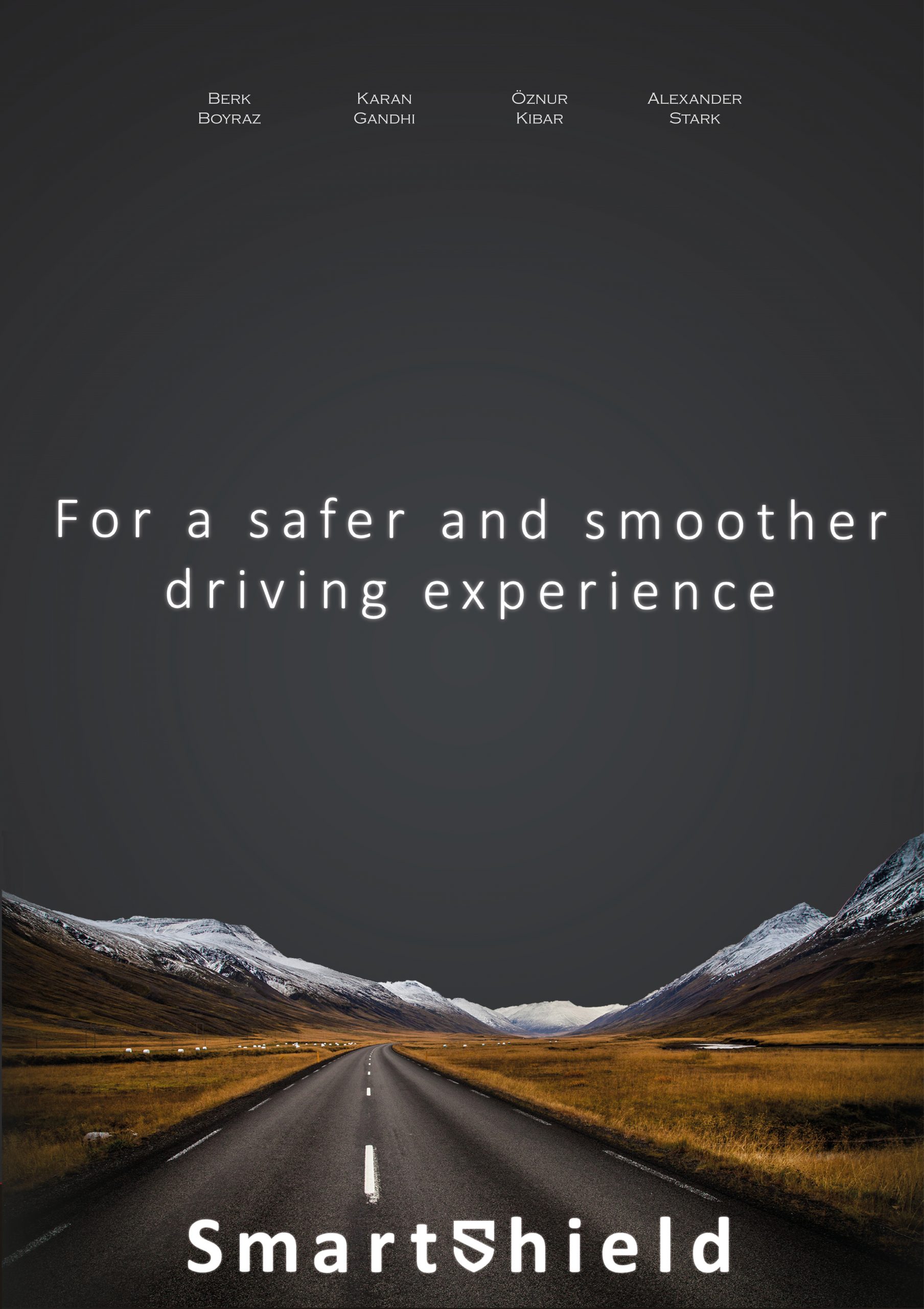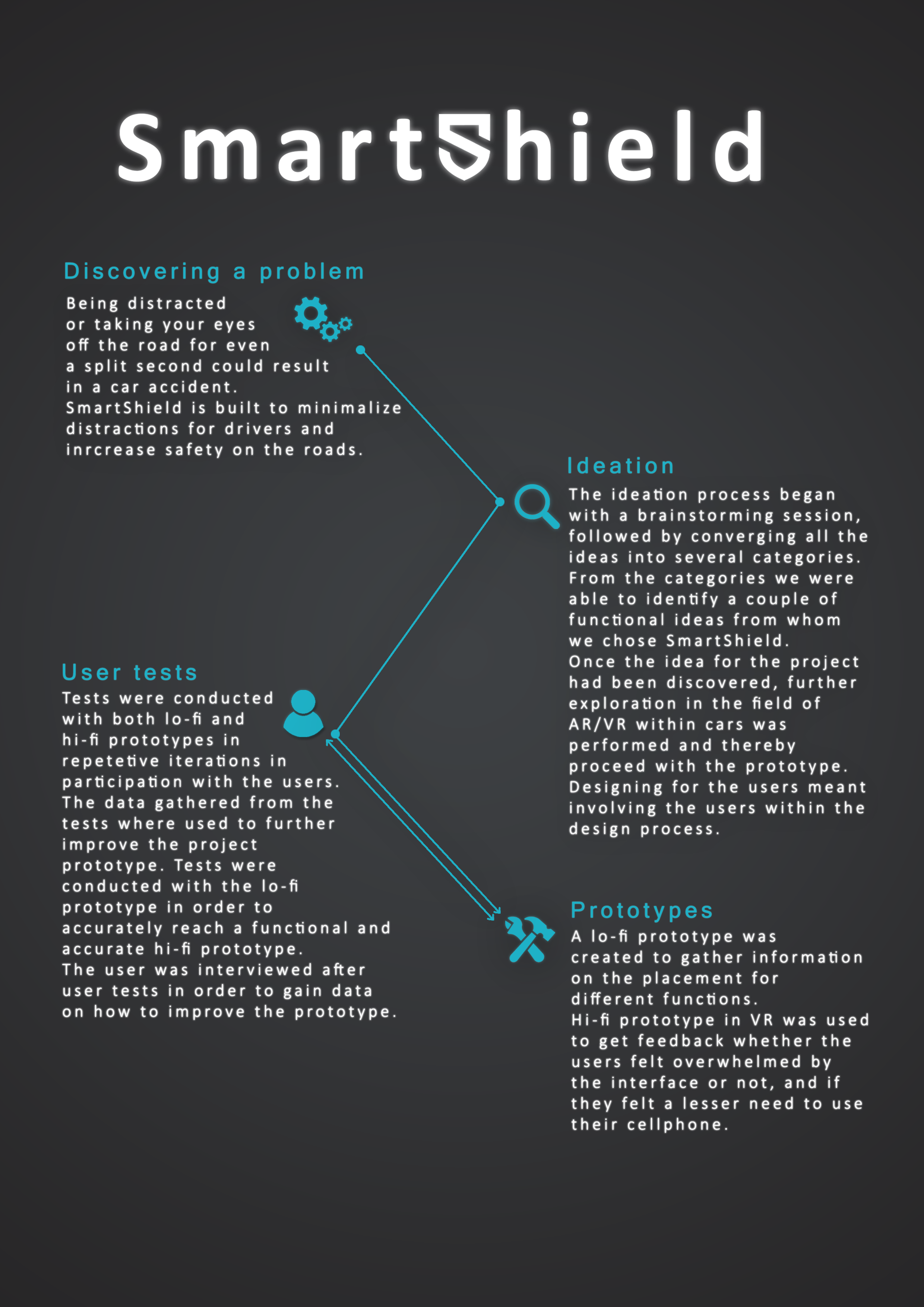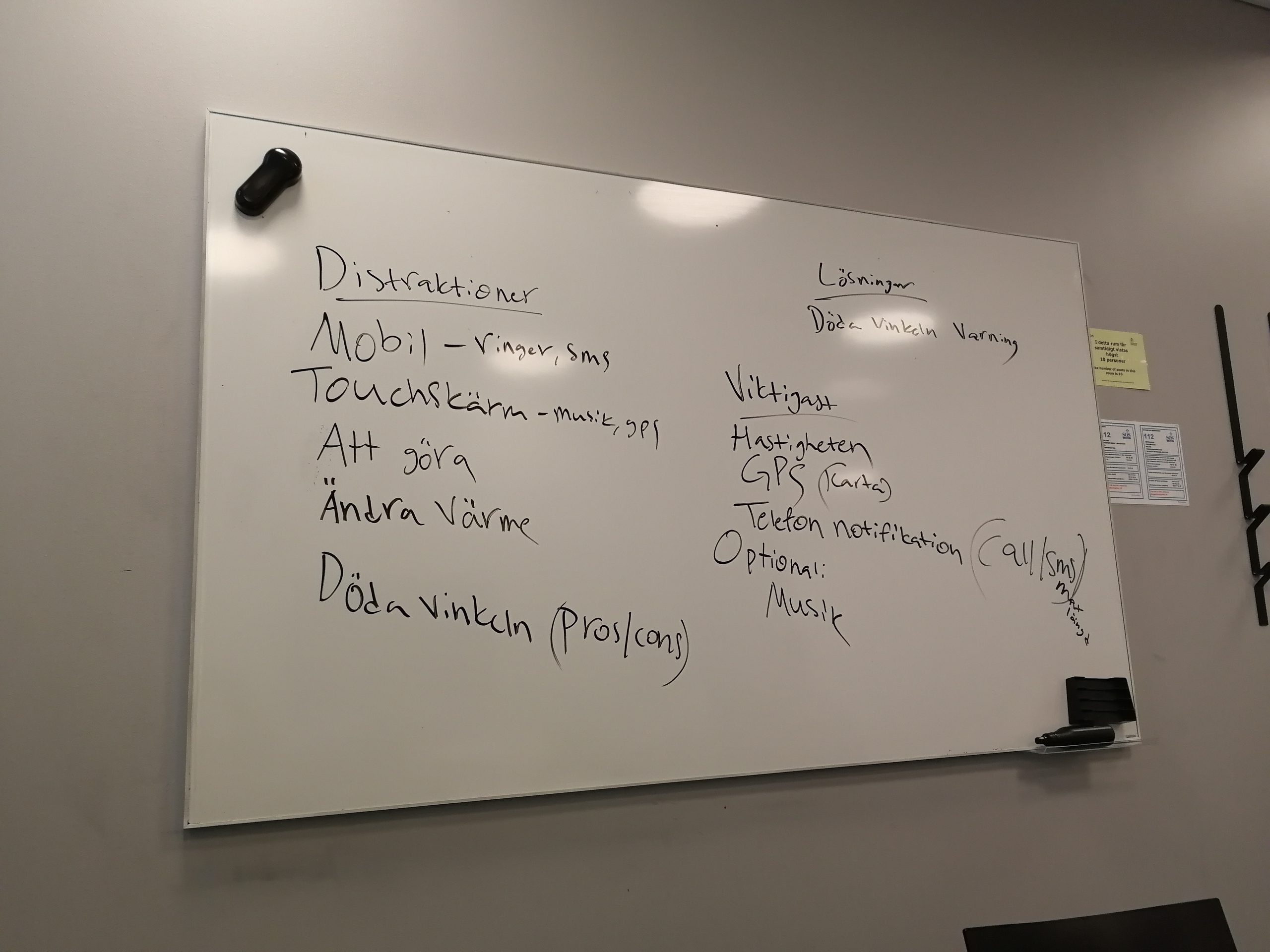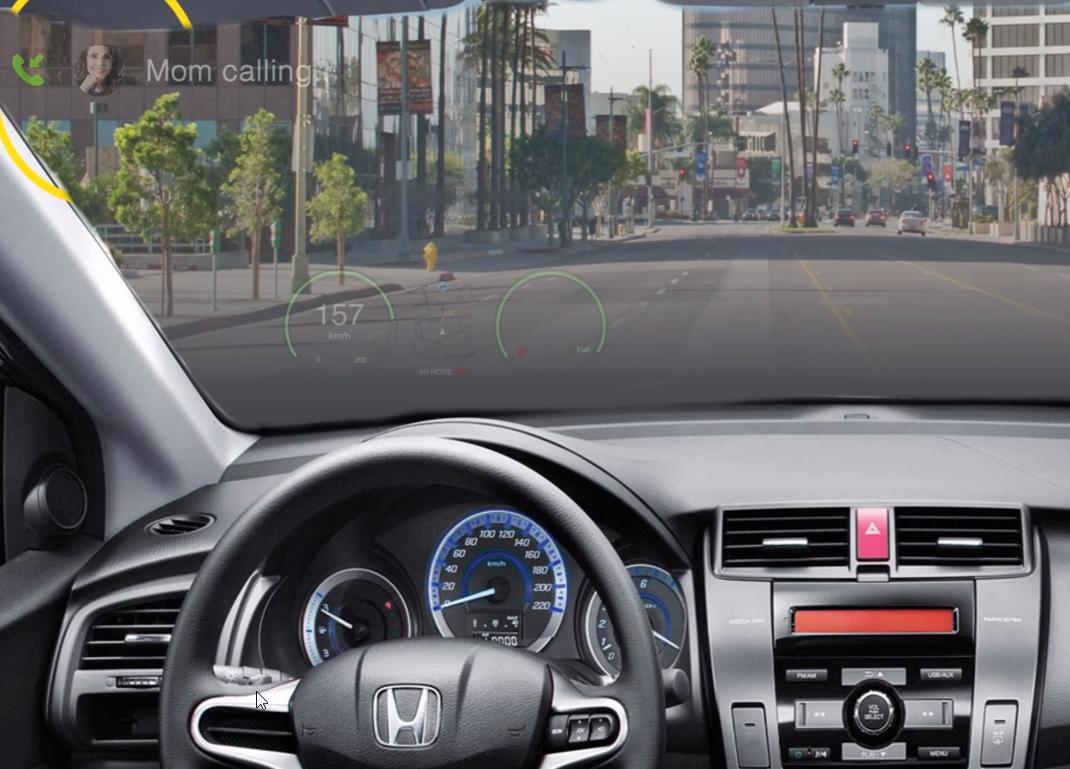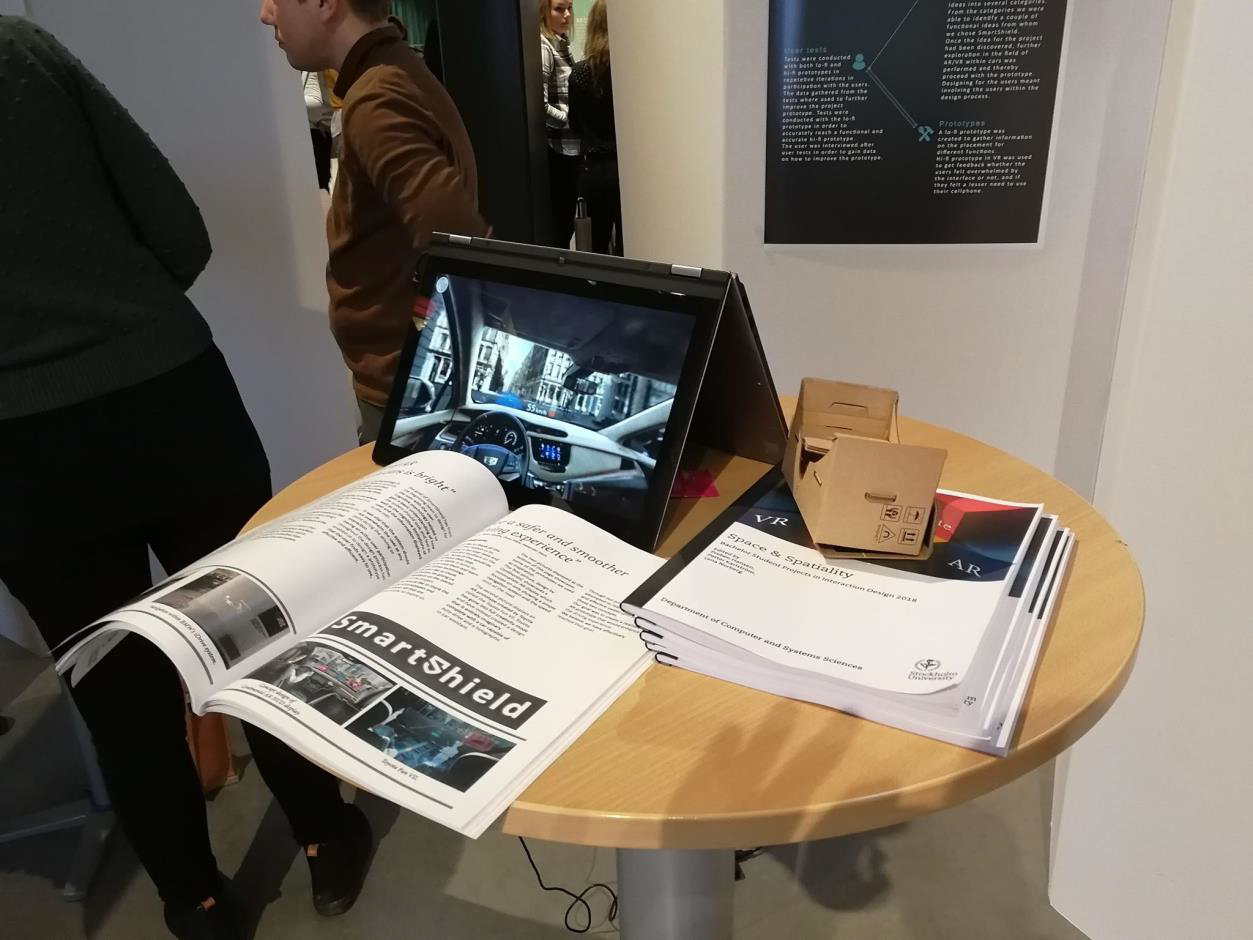SmartShield
Your driving companion
Overview
SmartShield provides a safer driving experience through the digitalization of your windshield. All the information you would find on your dashboard and cellphone will instead be displayed on your windshield. There’s no need to look away from the road.
Design Thinking was used as a framework for the design process. The product was developed using the standard design process of empathizing, ideating, prototyping, testing, and re-iterating the design.
The result was a virtual reality prototype created using Adobe Illustrator and After Effects. A Virtual Reality environment was simulated through the use of VR goggles. The prototype was effective in displaying a viable alternative that can aid in increasing traffic safety.
Client
University course project
Deliverable
Hi-Fi prototype
My Role
UX Designer
Project Time
Two weeks
Tools
Pen and paper
Figma
Adobe Illustrator
Adobe After Effects
My Role
UX Designer. Facilitating the design process, conducting user research and testing, creating Lo-Fi and Hi-Fi mockup.
The Challenge
SmartShield is our attempt at increasing traffic safety through attempting to solve the problem of drivers using their cell phone while driving. Research showed that 24% of the people involved in car accidents had used their cell phone ten minutes prior to the accident (Tibshirani, 1997). The authors compared ‘driving while calling’ to ‘driving while drunk’ as both states had almost the same chance of an incident occurring.
The number of traffic accidents caused by cell phone use are alarming. Current technology is limited to a projection on the windshield and still distracts drivers as they must shift their eyes from the road towards the projection or dashboard.
We attempt to address the issue by asking ourselves how we can help drivers ignore the urge to use their cell phone while driving.
How can we help?
Having recently read that traffic accidents are often caused by the use of smartphones while driving we decided to try and do something about this problem. The process started with a simple brainstorming session where we poured all our ideas out onto the whiteboard, no matter how crazy or non-viable. After everyone had written down their ideas we narrowed them down through affinity diagrams and landed on one concrete idea; SmartShield, a windshield that is more than just a sheet of glass; it displays needed contents of your smartphone onto your windshield thus eliminating the need for “texting while driving”.
Empathizing with the drivers
Who are our users? They are us, they are the people we know, the people we see out on the street, the people we’ve never met. They are all the human beings who drive cars.
What do these users need from this product? They need ease of use, accessibility, and usefulness.
The driving theory behind this project is Cognitive psychology which helps us to understand the user’s way of thinking and how much information we can safely display to the driver and the best way to display it. Driving involves a heavy cognitive load; being aware of the neighbouring cars, available lanes, navigating to ones’ destination, as well as interacting with the systems inherent in the car.
Our goal with SmartShield was to try and make it easier for the driver by relieving some of this cognitive load by displaying information in a more accessible way.
Ideating
A brainstorming session was held to think of solutions. Affinity diagram was used to group all the ideas and help pick out the useful ones. The design group landed on the idea of a windshield that was more than just a simple glass screen. This windshield would help the user avoid using their cellphone while driving by instead displaying all the necessary information directly on the windshield (without ever obstructing the view of the road).
SmartShield activates when the car is turned on. Upon boot-up all functions such as gas counter, temperature reading, time, etc. are displayed before returning to it’s minimalistic and user-customized look. The user can customize the functions of SmartShield through an easy-to-use control wheel. The driver has the option to connect their phone through Bluetooth, thus enabling the display of user information such as calls and notifications. The display of phone information is meant to help maintain a high degree of road safety by helping the driver avoid using their cell phone while driving. SmartShield is visible at all times as the brightness of SmartShield adjusts automatically to the light being shined on the windshield.
SmartShield provides an easier driving experience, making it much simpler to get from point A to point B. Simply start your car and start driving, all the information you need will be displayed on your windshield according to your own preferred layout.
User group
The requirements for our user group was that they a) had a valid drivers licence and, b) had a minimum of one year driving experience. A survey was used to check for users that passed the requirements. The users that fit the criteria were invited to participate in the user tests. The survey also asked a couple of other relevant questions such as whether or not they used their phone while driving, and if they have had previous experience in participating in user tests.
User testing
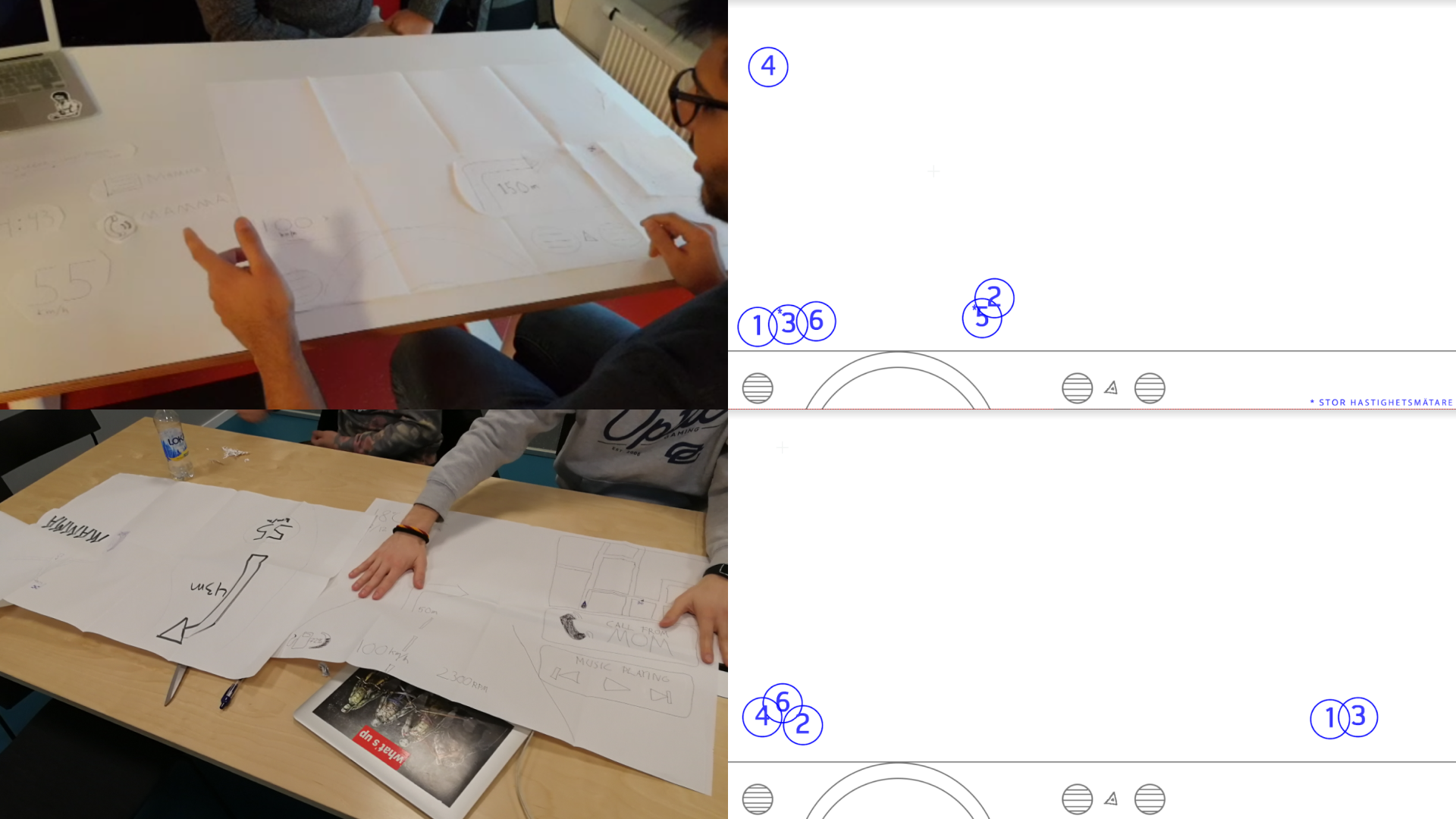
The first prototype was a lo-fi prototype created with paper and pen. The lo-fi prototype was used for feedback on the layout and size of the functions. A couple of functions also had multiple designs so that we could get feedback on which one the users preferred. Choosing paper as a prototyping method allowed for fast and easy changes for a new iteration of tests. This lo-fi prototype consisted of different paper modules that could be placed and moved around a paper windshield. Through the use of heatmaps the design team could discern the users preferred placement of different functions. The users were asked various questions and were advised to talk aloud and openly express their opinions.
The feedback gained from the low fidelity prototype was used to create the hi-fi prototype which was designed using Adobe Illustrator and After Effects in a VR format.
Time constraints meant that user testing with the Hi-Fi prototype was limited to one short and simple iteration.
Hi-Fi Prototype
The user tests for the Hi-Fi prototype were conducted in the same manner as the Lo-Fi user tests. The prototype was created with Adobe Illustrator and Adobe Premiere Pro. The users were asked to interact with the prototype and give their general impressions. The majority of the feedback regarding the interactive capabilities had already been gathered through the Lo-Fi user tests. The feedback here was mainly regarding the aesthetics of the prototype. Feedback gathered from the Hi-Fi prototype was then used to create the final VR-prototype.
Results
The final prototype which visitors could interact with through VR-goggles. The project was displayed in Stockholm University in Kista.
Final thoughts
The end result was a prototype that was meant to showcase the possibilities of Human-Computer-Interaction and user resarch when used to tackle issues affecting our society. Had there not been a constraint on the project time the final high fidelity prototype would have a much broader scope with more interactive capabilities. The use of participatory design meant that the prototype held a high level of usability and correctly met the users requirements and needs.
Future plans
- Re-iterate the Hi-Fi prototype to include more functionality
- More user testing to ensure user requirements are met

